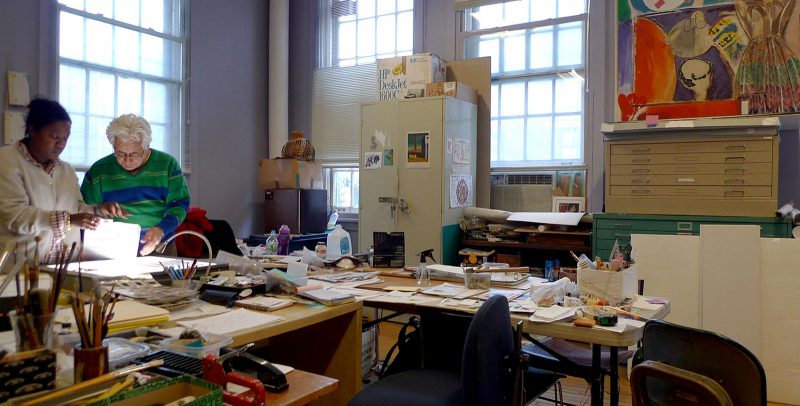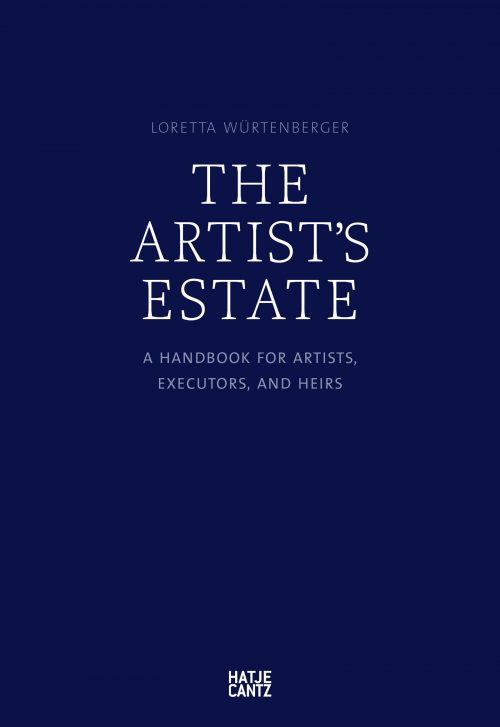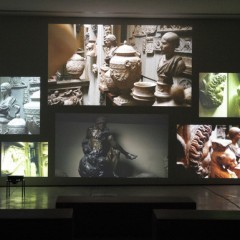In addition to the universal certainties of death and taxes, artists face the eventuality that someone will have to deal with the work they leave behind – their artistic estates. This is an issue for all artists – whether their work has market value or not. To insure that those works will be handled according to their wishes artists must know what they have – an inventory – and arrange for its eventual disposition with an estate plan.

No one has offered more support to artists around these issues than the Joan Mitchell Foundation. In 2007 they initiated a program, Creating a Living Legacy (CALL) to develop prototypes and best practices for organizing, inventorying and documenting artists’ production. They worked with twenty-seven artists on demonstration projects – information about them is available on the foundation’s website available as a free download. They have further trained Legacy Specialists who can work with artists and have funded several organizations that support artists, including Artist Trust (Seattle), Diverse Works (Houston) and Space One Eleven (Birmingham) to help spread information to artists nationally.While the CALL program was developed as a resource for older artists, younger artists will have a head start if they are aware of the needs and keep records and visual documents as they produce work.
“Career Documentation for the Visual Artist: An Archive Planning Workbook and Resource Guide” offers a clear and readable step-by-step guide for artists to assess what they have or have not archived and develop realistic goals to achieve the desired records. It discusses the importance of creating an archive, acknowledges the conflict many artists feel between making artwork and keeping track of it, and the changing uses of documentation throughout an artist’s career. It outlines the information to be recorded, suggests how to find trained assistants to work with artists, and sets out a worksheet for the initial goal-setting and planning of what can seem to many artists to be an overwhelming project.
The Archive Planning Workbook discusses the legal issues involved in whether to hire an assistant or an independent contractor for help and provides very useful guides to the questions that need to be addressed from the beginning of the project. A chapter on the physical storage requirements of various types of work includes sources of supplies, a bibliography, and emphasizes the need for ongoing assessment of storage conditions. A chapter on record-keeping includes both hand-written inventories and computer databases, gives examples of various types of records and a detailed list of information that should be included in any inventory. A chapter on photographic documentation develops sample equipment for three different budgets, acknowledging that it is an expensive project. The workbook is straightforward, detailed enough for artists at any stage of the inventory process, and will be an indispensable tool for artists.
In 2013 the Joan Mitchell Foundation, working with Volunteer Lawyers for the Arts of Massachusetts developed two Estate Planning Workbooks, both available as free downloads, one for artists and a second for attorneys and estate planners. They both discuss the most basic questions that must be addressed: How does the artist want to be remembered and want her work to be remembered, protected, presented, collected, or sold? What does the artist think her impact has been, however defined ? What would the artist like it to be? Does she want or intend for the work to generate income for others and/or support any particular group, location, or charity? Both workbooks then go into the necessary steps to be taken to account for an artist’s wishes.
“The Estate Planning Workbook for Visual Artists” synthesizes large topics. It is intended to outline the benefits of estate planning and explain a number of legal concepts and terms. It discusses the various people who might be involved in the process, including family members, attorneys, assistants, representatives or dealers and appraisers, and gives tips on selecting them. The Workbook covers both physical and intellectual property. It begins with a number of short, hypothetical examples and includes very useful checklists of estate planning questions and copyright questions as well as resources for further information. It describes the various ways an estate can be planned to fulfill a variety of intentions, including gifts, trusts, and artist-endowed foundations, then gives descriptions of each as well as a range of legal concepts such as power of attorney, living wills and health care proxies.The Workbook is intended to give artists enough information to make considered plans for their estates. It covers the topics concisely and with minimal examples.
Further Reading in book form and online

Artists, and indeed art historians working on twentieth century art, archivists, museum staff and gallerists who would like to go further into the subject will welcome this book by an art historian and lawyer who has a business handling artists’ estates and has set up a non-profit website to facilitate sharing ideas among estates. Würtenberger gives an overview of multiple aspects of how the contemporary and recent art world actually works, full of details such as actual prices to oversee a modest artist’ estate – just the sort of information that is never brought together in one place – indeed, rarely committed to print.
The book includes European and American legal perspectives in relation to artists’ estates and uses extensive and interesting examples throughout, which makes for surprisingly-lively reading of what is ultimately a technical handbook. She also brings a broad knowledge in humanistic studies and art history to bear on the subject. The second section of the book records Würtenberger’s interviews with thirteen individuals who are administering artists’ estates, including those of Paul Klee, Robert Motherwell, Eva Hesse and Robert Mapplethorpe, asking them the sorts of questions that is rarely available concerning how the estates evolved. It makes for fascinating reading. The volume is extensively footnoted for those who want further information on any topic.
Anyone who desires further stories of artists’ estates should see Magda Salveson and Diane Cousineau “Artists’ Estates; Reputations in trust “(Rutgers University Press, New Brunswick: 2005) ISBN 0-8135-3604-9 Salveson, widow of the painter, John Schueler, describes the significant change of her responsibilities as well as position when she became the artist’s widow. She records conversations with a broad range of colleagues administering artists’ estates and foundations. They include artists’ widows, children, friends, gallerists and lawyers. The estates include those of Jackson Pollock, Richard Diebenkorn, Romare Beardon, Mark Rothko, David Smith and Dorothy Dehner. This is art history from an often overlooked segment of the art world.









